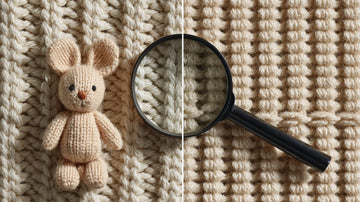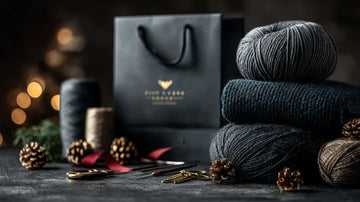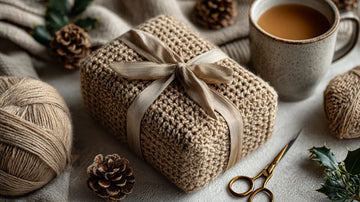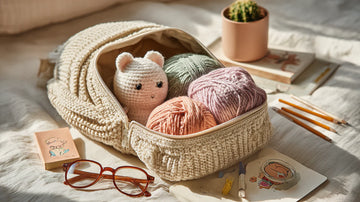Focus keyphrase: tapered vs inline crochet hook
You've found the perfect pattern and the ideal yarn. But when you start, something feels… off. Your stitches are inconsistent, your hand feels strained, and you can’t figure out why. 🤔 The answer might be in a detail you've never thought about: the shape of your hook’s head. The subtle difference between a tapered vs inline crochet hook can have a major impact on your tension, speed, and comfort. This guide will demystify these two common hook types and help you discover which one is your perfect match. 🧶💡
The Anatomy of a Hook: Beyond the Handle
Before we dive into the two shapes, let's quickly define the parts of a hook. The "head" is the pointed tip that grabs the yarn. The "throat" is the part just below the head, where the yarn rests as you pull it through the stitch. The shape of the head and throat determines how the yarn interacts with the hook, and this is where the major differences lie.
The Inline Hook: The Consistent Choice
The inline hook gets its name from its clean, straight profile. The shaft of the hook is the same diameter from the thumb rest all the way to the head, with the throat carved straight into the shaft. This creates a perfectly even shape.
Pros 👍
-
Consistent Stitches: Because the throat and shaft are the same size, it's easier to create uniform stitches. The hook guides you to make a stitch of the exact size you intended, leading to a neater, more even fabric.
-
Precision and Control: The distinct edge of the hook's head makes it easy to precisely insert into each stitch. This is why inline hooks are often the favorite for advanced crafters who prioritize precision. It's a key feature for projects that require a consistent look, like amigurumi. You can see this in action with our Yarniss Beginner Crochet Kit Bunny.
-
Great for Amigurumi: The straight shaft makes it easy to maintain the tight tension needed for stuffed toys.
Cons 👎
-
Less Forgiving: The sharp, distinct head can make it more challenging to get the yarn around the hook. It requires a more deliberate motion, which can be difficult for beginners.
The Tapered Hook: The Classic Glide
The tapered hook has been around for generations and is a familiar sight to many. The head of the hook tapers down to a point, and the throat is narrower than the shaft.
Pros 👍
-
Smooth Glide: The narrower throat and rounded head make it easy for the hook to glide through a stitch. This can feel faster and more fluid, making it a favorite for many crocheters.
-
Forgiving for Beginners: The more rounded head is less likely to snag on stitches, making it a bit more forgiving if your tension is inconsistent.
-
A Familiar Feel: For many, the tapered hook is the one they learned on, so it feels natural and comfortable.
Cons 👎
-
Inconsistent Stitches: The narrower throat can sometimes lead to stitches that are slightly looser than the rest of the project. If you are not careful, this can result in an uneven fabric.
-
Yarn Splitting: The pointier tip of some tapered hooks can be more prone to splitting yarn, especially with yarns that have a loose twist.
Side-by-Side Comparison: A Visual Breakdown
Our Verdict: Which Is Right for You?
The debate between tapered vs inline crochet hook is a classic one, and there is no single right answer. It all comes down to your personal preference, your grip style, and the projects you enjoy.
-
Choose an Inline Hook if… you prioritize precision and uniform stitches. It’s the perfect tool for projects that require a neat, dense fabric, like amigurumi.
-
Choose a Tapered Hook if… you prefer speed and a smooth, effortless glide. It’s a great choice for general projects and for crafters who enjoy a fluid motion.
A great tip for beginners is to try both! Many crafters keep a variety of both types in their toolkit. An ergonomic handle can make a huge difference in how comfortable either type feels. Our Yarniss Large Ergonomic Crochet Hooks Set offers a variety of hooks, allowing you to find the perfect fit.
Pro Tips for Hook Success
-
Test Your Hooks: Try a small swatch with both a tapered and an inline hook to see which one feels best in your hand and gives you the tension you want.
-
The Right Tool for the Job: You might find that you prefer an inline hook for amigurumi but a tapered hook for scarves. Having a versatile set, like our Yarniss crochet kit, ensures you always have the right tool on hand.
-
Listen to Your Hands: Pay attention to how your hand feels. If you feel any discomfort, it might be a sign that you need a different hook or to change your grip. For more tips on finding the right hook, check out our crochet hooks blog section.
-
Practice Makes Perfect: No matter the hook, a consistent grip and even tension come with practice. Keep working at it, and you'll soon be a pro! 😊
Ready to find the perfect hook for your style? Explore our full range of crochet hooks and kits to start your next project with confidence.





